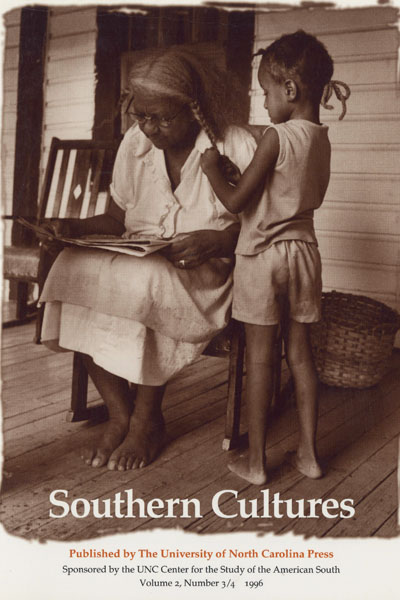“I have recently been reflecting on the significance of the porch in the South, on what that space allows and what it means.”
I have recently been reflecting on the significance of the porch in the South, on what that space allows and what it means. I have been thinking about the history of sharing and interaction that characterizes porch space in southern culture, about the voices that bring the space to life, about what this space meant historically and creatively to almost everyone in the deep South. Before proceeding, however, a definition is in order. Throughout this discussion, the word “porch” refers to the physical attachment that protrudes from the front of the first level of many houses and business establishments in the South. I emphasize front and first level because I do not wish to identify wrap-around porches, or verandas, or balconies with the activities I describe; I am concerned with those spaces that face directly toward the street, with an unobstructed view of traffic along the road or walkway or, later, sidewalks. Such porches were certainly a phenomenon of the nineteenth century, but I am primarily concerned with the time period in the first five or six decades of the twentieth century, where yards might have been a solid expanse of dirt and where walkways would probably not have been paved. This space is usually not enclosed, though it may be screened in, and it is covered by an extension from the roof of the house, with appropriate supporting joists. Frequently, owners of the houses include swings suspended by chains from the overhead beams, accordingly called “porch swings.” In addition to swings, rocking chairs and straight-backed chairs are the usual furniture, and of course people can sit on the porch steps.


